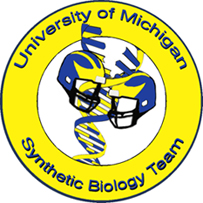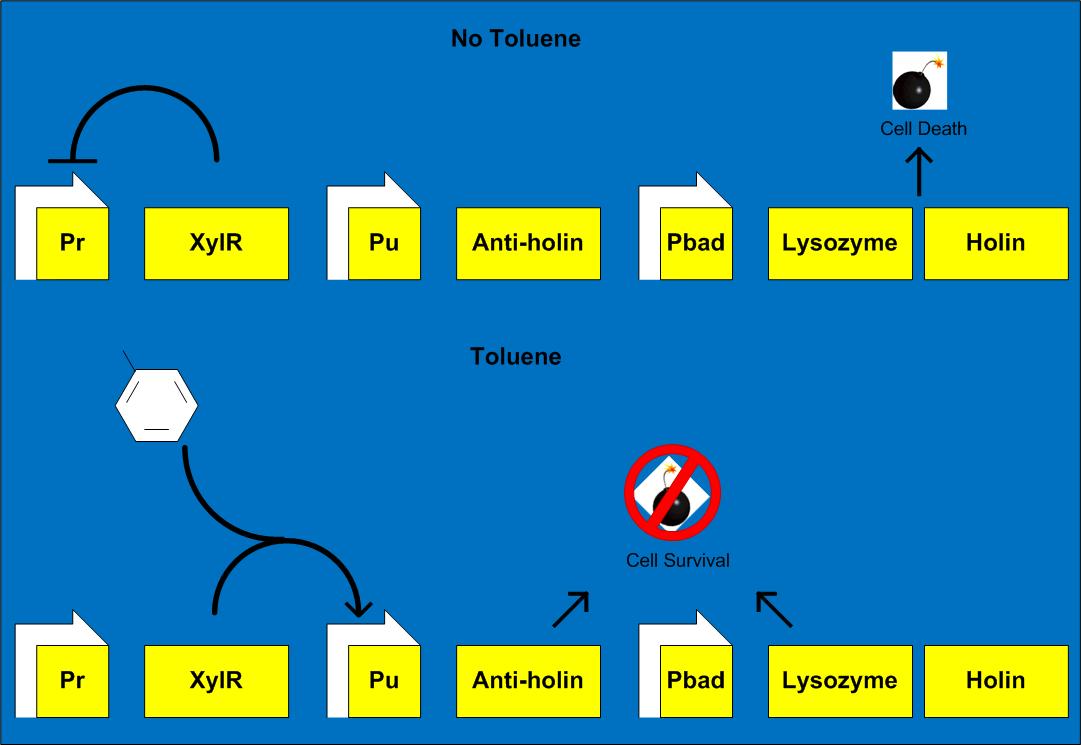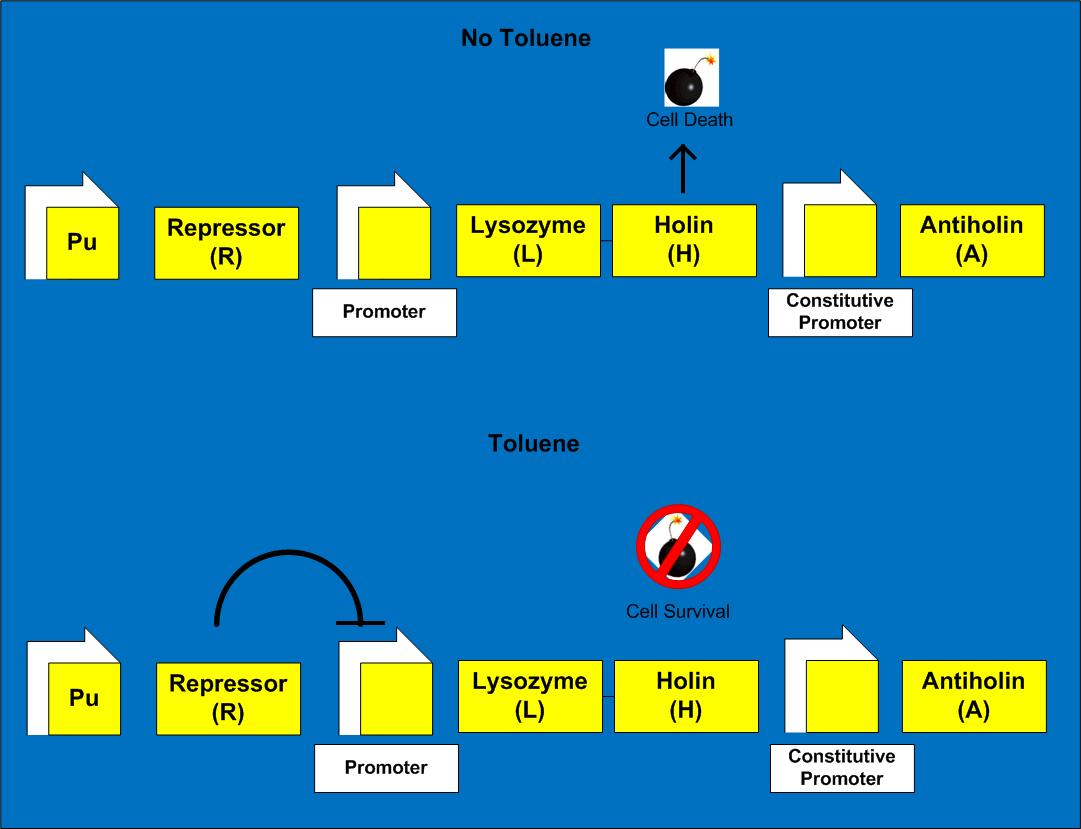Team:Michigan/Project
From 2009.igem.org
(Difference between revisions)
| Line 44: | Line 44: | ||
==<B><font size=4>Suicide Mechanism</font></B>== | ==<B><font size=4>Suicide Mechanism</font></B>== | ||
<div align=justify> | <div align=justify> | ||
| - | The Terminator's suicide mechanism, or kill switch, operates through the [http://partsregistry.org/wiki/index.php?title=Part:BBa_K112808<font color=navy><B>Enterobacteria phage T4 Lysis Device</B></font>] created by the Berkley 2008 team. We proposed two mechanisms for cell lysis | + | The Terminator's suicide mechanism, or kill switch, operates through the [http://partsregistry.org/wiki/index.php?title=Part:BBa_K112808<font color=navy><B>Enterobacteria phage T4 Lysis Device</B></font>] created by the Berkley 2008 team. We proposed two mechanisms for cell lysis. In the arabinose inducible suicide mechanism Pu is controlling the cell survival and in the suicide mechanism with tunable repression Pu is controlling cell death. |
| Line 51: | Line 51: | ||
The suicide operon consists of an arabinose-dependent promoter controlling expression of the holin and endolysin proteins, followed by the Pu promoter controlling the antiholin gene shown in the figure below. This way, none of the genes are activated until the device is released into the contaminated area, along with a quantity of arabinose. This results in the arabinose-mediated expression of the lytic genes holin and endolysin, as well as the toluene-mediated expression of antiholin, which posttranslationally inhibits the lytic proteins. Then, when the toluene disappears (when it is all metabolized) from the local region of the individual device, antiholin is no longer expressed, allowing the lytic proteins to destroy the cell. | The suicide operon consists of an arabinose-dependent promoter controlling expression of the holin and endolysin proteins, followed by the Pu promoter controlling the antiholin gene shown in the figure below. This way, none of the genes are activated until the device is released into the contaminated area, along with a quantity of arabinose. This results in the arabinose-mediated expression of the lytic genes holin and endolysin, as well as the toluene-mediated expression of antiholin, which posttranslationally inhibits the lytic proteins. Then, when the toluene disappears (when it is all metabolized) from the local region of the individual device, antiholin is no longer expressed, allowing the lytic proteins to destroy the cell. | ||
| + | |||
| + | |||
| + | <B><font size=3>Suicide Mechanism with Tunable Repression</font></B> | ||
| + | |||
| + | In this design, a repression mechanism is downstream of the Pu promoter, and this this represses the production of holin and endolysin proteins. A constitutive promoter is placed in the front of the antiholin gene so antiholin is constantly produced. When toluene is present, it activates the Pu promoter which results in the repression of the promoter expressing holin and endolysin. As a result, the cell survives. However, in the absence of toluene, the repressor protein is not produced, so holin and endolysin levels rise to the point that the cells are lysed. | ||
| + | |||
| + | The motivation for this design is as follows. The Berkeley 2008 design used an inducible promoter in front of the holin and endolysin; this inducible promoter then would trigger the onset of the killing mechanism. In our design, we wanted to use Pu to make the killing mechanism responsive to toluene concentration. However, we needed to set this up such that Pu would prevent cell death. Due to this requirement, we designed an inverter that is comprised of the repression module. This way, we did not have to modify the Berkeley part, which is characterized as working. | ||
Revision as of 20:58, 21 October 2009
| ||||||||||||||||||||||
|---|---|---|---|---|---|---|---|---|---|---|---|---|---|---|---|---|---|---|---|---|---|---|
 "
"



